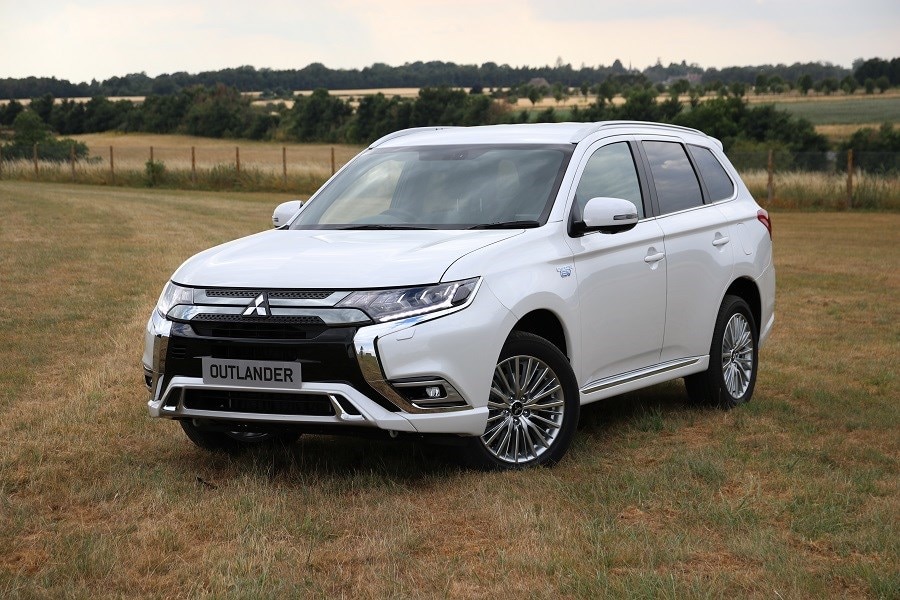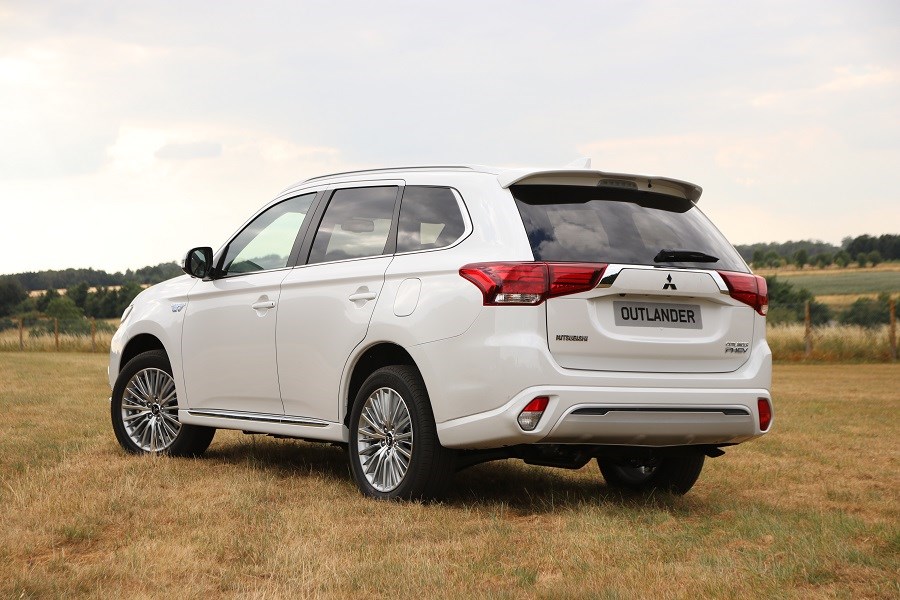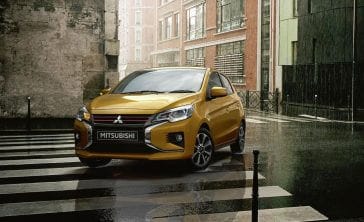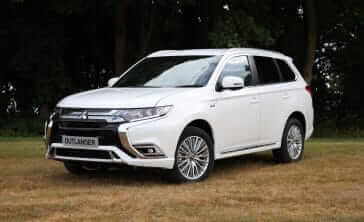Model Review
The Outlander has been a favourite of Mitsubishi’s UK model line-up for a couple of decades, which was only furthered once the line-up received a boost in 2012; the year the Japanese manufacturer started offering the Outlander as a plug-in hybrid.
Sitting alongside the conventional petrol and diesel options available for this SUV, the PHEV offers an attractive proposition to business users and those with regular access to charging points.
The first Outlander PHEV was unveiled at the 2012 Paris Motor Show and used a four-cylinder 2.0-litre petrol engine paired to an electric powertrain, offering a claimed all-electric range of 32 miles. Sales started the following year.
Mitsubishi has continually upgraded and enhanced the Outlander PHEV, with the first facelift of the model occurring in 2015.
Latest model
Mitsubishi facelifted the Outlander PHEV for the second time in 2018, with the updated model receiving new LED headlights, as well as a new front grille, revised bumpers, a new spoiler and distinctive 18-inch alloy wheels.
Despite the numerous changes to the Outlandser’s looks, the most notable difference to the PHEV is a new 2.4-litre petrol engine, which boasts more power and torque than the previous 2.0-lite unit. The electric motor also gained an extra 13bhp as well an increased electric range.
Improved sound deadening and more supportive front seats are part of a campaign to improve the Outlander’s cabin refinement, which is also aided by the smoother new engine. More safety kit has been fitted as standard, exemplified by the introduction of a new ‘hs’ spec, which adds features such as adaptive cruise control and automatic emergency braking.
Value for money
As with all plug-in hybrids, they are frequently more expensive to buy than petrol and diesel-powered models, such is the extra expense required in building them.
This means that the PHEV costs over £8,000 more to purchase than a petrol or diesel Outlander, with prices for the plug-in SUV starting from £36,755. It does come decently equipped for the price, with standard features including dual-zone climate control, a reversing camera and 18-inch alloy wheels, but standard safety equipment is disappointing for the price. Top-spec 5hs versions cost £46,060, which is far too expensive for what it is — even when you consider the cost savings for its drivers.
Used models, however, make a fantastic amount of sense with the cheapest versions starting from around £11,000, and around £13,000 for something with less miles on the clock. There are some excellent discounts on nearly-new models, too, with an average saving of roughly £8,000 over a forecourt fresh example.
Looks and image
The 2015 update to the Outlander introduced bold new looks, with the front end receiving an imposing chrome and gloss black front end. The most recent facelift is built on the previous enhancements, with its redesigned bumpers adopting a similar look to another Mitsubishi SUV — the Eclipse Cross. The rear isn’t quite as interesting, but the addition of a small rear spoiler is a welcome touch. Other than the occasional plug-in hybrid badge and the charging flap on the driver’s side rear-quarter panel, there’s little to show that it’s a plug-in hybrid, meaning it can quietly blend in.
However, the interior is a bit drab. Compared to newer SUVs in a similar price bracket, the Outlander’s dashboard is starting to look a bit dated, even after the car’s recent revision. On the plus side, it’s functional to use, with well-placed buttons and lots of adjustability so you can get comfortable. But the quality that you expect on a £40,000 car just isn’t there, with some of the plastics feeling a bit low-rent compared to rivals, and the central touchscreen having an aftermarket feel to it. These gripes might be forgivable if the Outlander PHEV was £10,000 cheaper, but its premium price tag leaves you somewhat subdued by the cabin.
If you spend a lot of time driving around town and favour a relaxed experience behind the wheel, the Outlander makes a lot of sense. It’s refined, quiet and feels amazingly light for an SUV. It’s also brimmed with tech to make the most of the battery power, with a special mode that can optimise the electric range for urban use. The latest facelift has given the steering extra feel and improved the refinement, but the ride still feels jittery as the additional weight from the batteries is offset by firmer suspension.
Space and practicality
Unlike other plug-in models, the Outlander PHEV is no less practical than its conventionally powered counterparts. The main change is that the PHEV is a strict five-seater, with no seven-seat option like you find on other versions of the Outlander. Those extra seats are really only meant for small children, though, so it’s not a major loss.
The extra space required for the batteries means a slight reduction in boot size — but you’re only left with 14 litres less than the standard Outlander. This leaves a 463-litre load bay, which is roughly average for a vehicle of this size.
Many manufacturers recommend that you don’t tow with their electrified vehicles, but Mitsubishi is an exception to this; the PHEV is capable of towing a trailer up to a braked weight of 1,500kg.
The Outlander PHEV was separately crash tested from the standard car, and received the full five stars from Euro NCAP in 2015. This indicates that it is a safe car, although it’s lacking when it comes to standard safety equipment. The entry-level Juro specification doesn’t come with any safety aids, which is disappointing for a car of this price. The next trim level –— 4h — performs better, with this version getting blind-spot monitoring, cross traffic alert and adaptive LED headlights.
Only the high-spec ‘hs’ versions come with autonomous emergency braking, adaptive cruise control and high-beam assist.
Engines
The Outlander’s new 2.4-litre petrol engine is more powerful than its predecessor, producing 133bhp and 211Nm of torque. This is helped by the extra punch of the two electric motors — one mounted on the front axle and the second at the rear.
But the PHEV is a heavy car, so it never feels as quick as it should, even with the torque from the electric motor. It has a top speed of 106mph — or 83mph in pure EV mode — and can accelerate from 0-60mph in 10.3 seconds, which is half a second quicker than before.
The batteries can be charged fully in three to five hours when using a home-mounted wallbox or public charger, or from flat to 80 per cent in just 25 minutes when using a rapid charger.
Running costs
Those wanting to cut back their running costs should take note with the Outlander PHEV. Its electric range of between 28 and 35 miles makes it ideal for those who have a short commute or are able to charge when at work, in which case you could potentially spend very little on fuel. Its claimed fuel economy figure of 139.7mpg and CO2 emissions of 40g/km is also impressive. However, if you don’t have access to regular charging or frequently take on longer journeys, you might find that the diesel Outlander is cheaper to run, because the 2.4-litre petrol engine isn’t very efficient on its own.
Its low emissions also put it on a low BIK company car tax bracket, which makes it a fantastic proposition to business users, with significant savings to be offered compared to normal petrol and diesel models.
Things to look out for
The Outlander PHEV has proven to be a reliable model, and even with its complex underpinnings, it seems to have been largely problem-free. The only things to note are that a clip inside the charging door has a tendency to come off and get stuck which can lead to the flap rubbing against the bodywork, subsequently causing chips and damage. A couple of owners have also reported that the brake callipers can easily seize.
Rivals
Currently, the Outlander PHEV is one of very few plug-in hybrid mid-size SUVs, with the Kia Niro, Mini Countryman PHEV and the more expensive Volvo XC60 being the only rivals. The Toyota RAV4 and Honda CR-V are also offered as a conventional hybrid. Though there are other plug-in hybrid SUVs expected in the coming years including variants of the Vauxhall Grandland X and Peugeot 3008.
Depreciation
Mitsubishi doesn’t have the same brand appeal afforded to other firms, which means that its cars are usually fantastic value on the used market. The Outlander PHEV is no different, with significant discounts available on nearly-new models; early examples can cost as little as £11,000 at the time of writing.





